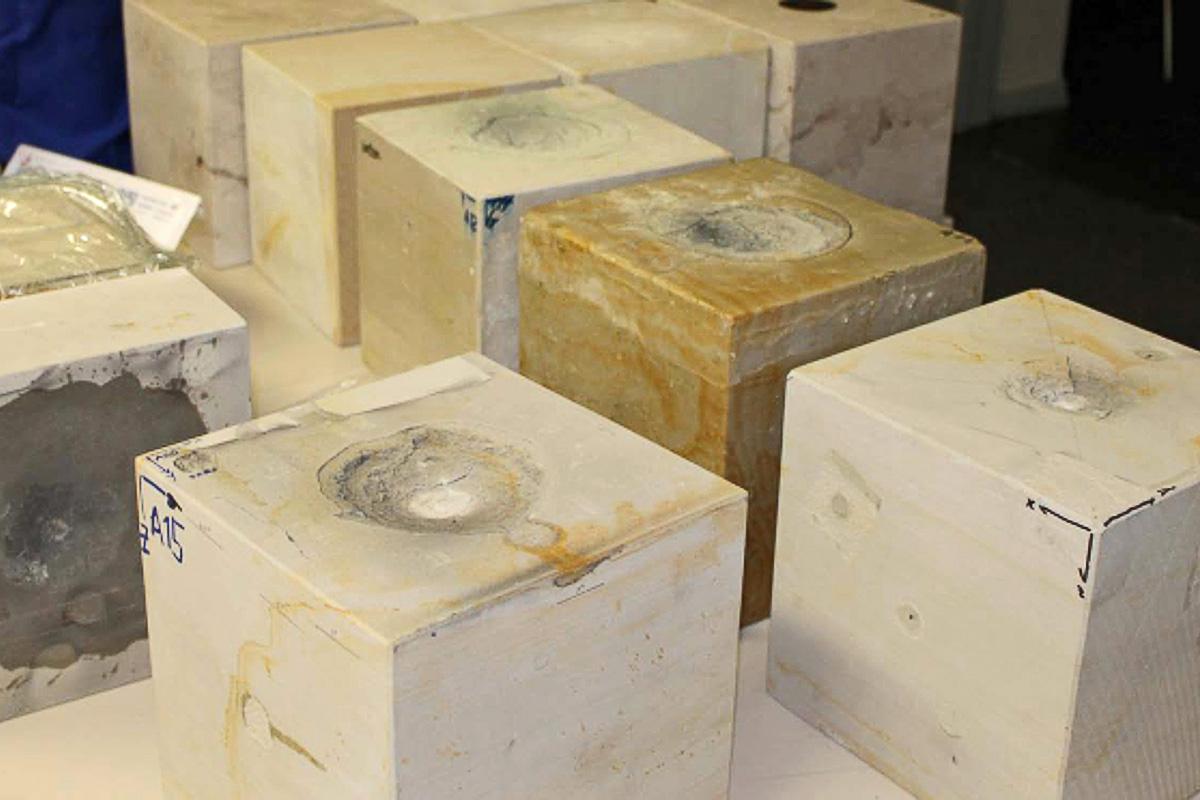Multidisciplinary Experimental and Modeling Impact Research Network (MEMIN)
Impact cratering is a fundamental geologic process throughout the solar system. Understanding this process requires multi- and interdisciplinary research that includes studies of natural craters, laboratory experiments, and numerical simulations. Researchers at the Museum für Naturkunde Berlin are part of the Multidisciplinary Experimental and Modelling Impact Research Network (MEMIN) comprising geoscientists, physicists, and engineers who want to obtain new insights into impact crater formation on Earth and other planetary surfaces.
Central to MEMIN are two-stage light gas guns that became available through the collaboration with the Fraunhofer Institute for High-Speed Dynamics, Ernst-Mach-Institute (EMI). The two-stage light gas guns enable the acceleration of iron, aluminium and meteoritic projectiles, 2-12 millimetres in diameter, to velocities of up to 7.8 kilometres per second, to produce craters in the decimetre-range in solid rocks. Such a crater size has previously not been achieved in the laboratory and it allows for detailed spatial analyses. The cratering experiments use different target materials with different properties such as strength, porosity, water saturation and various impact velocities as well as projectile materials to allow for the investigation of cratering mechanics, shock effects, and projectile distribution.
The work program includes complete mineralogical-petrophysical, and mechanical characterization of the target prior to and after the experiment using, for example, state-of-the-art geophysical tools for meso-scale tomography and microstructural analyses at the nano-scale, stringent control of the impact experiment itself with newly developed in-situ real-time measurements of fracture propagation, stresses, crater growth and ejecta dynamics, and numerical modelling of the complete process.
MEMIN is designed to yield a solid data base for validation and refining of numerical cratering models that allow for scaling of meso-scale observations to the size of natural craters.
Sub-Projects
- Numerical Modeling of Impact Cratering Processes
- Microscale shock processes in sandstone
- Projectile-target interaction, melting and vaporization in hypervelocity experiments and natural impactites
Publication:
Kenkmann, T., Deutsch, A., Thoma, K., Ebert, M., Poelchau, M. H., Buhl, E., Carl, E.-R., Danilewsky, A. N., Dresen, G., Dufresne, A., Durr, N., Ehm, L., Grosse, C., Gulde, M., Güldemeister, N., Hamann, C., Hecht, L., Hiermaier, S., Hoerth, T., Kowitz, A., Langenhorst, F., Lexow, B., Liermann, H.-P., Luther, R., Mansfeld, U., Moser, D., Raith, M., Reimold, W. U., Sauer, M., Schäfer, F., Schmitt, R. T., Sommer, F., Wilk, J., Winkler, R., Wünnemann, K. (2018): Experimental impact cratering: A summary of the major results of the MEMIN research unit. - Meteoritics and Planetary Science, 53, 8, pp. 1543—1568.
DOI: http://doi.org/10.1111/maps.13048
Further Details:
Funding: Deutsche Forschungsgemeinschaft (German Research Foundation, DFG)
Project Website: http://www.memin.de
